|
 “Postcards
are a unique way to study history,”
Baker said. Postcards not only
contain messages, but the cards
themselves tell a story. “Postcards
are a unique way to study history,”
Baker said. Postcards not only
contain messages, but the cards
themselves tell a story.
Postcards began as a popular way to
advertise goods in the nineteenth
century. They were called trade
cards, and were a popular publicity
method beginning around the 1870’s.
“These cards are highly
collectible,” she said.
It wasn’t until the 1890’s that
postcards began to take on the
character that we associate them
with today, a way of communication
between family and friends. They
became so popular that Congress
passed the postcard act in May of
1898 to create a special part of the
postal service for them. The
original cards in the first decade
of the 20th century cost one cent to
send. There is still a special rate
today for postcards of $.35 cents.
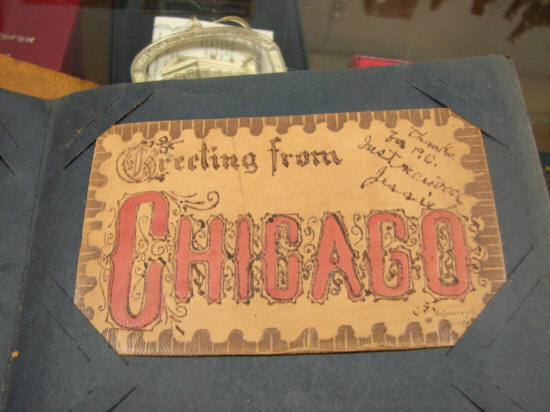
A card with a personal note
scribbled in the upper right corner.
Many of the early postcards did not
have a space for a note on the back.
Senders were only allowed to put the
address of the recipient.
Cheryl told a story
about how postcards were used in
central Illinois during the early
20th century. She has records of
young residents of Emden taking the
passenger train to Green Valley for
work. They would stay for several
days. On Friday, they would send a
postcard to their parents in Emden
telling them to meet the train as
they were coming home. The card
would arrive for the early mail
delivery on Saturday. This was a
time before telephones were common
in rural areas. And this was a time
when the USPS was much different
from today. “The delivery from Green
Valley took one day, and there were
usually two deliveries a day back
then,” she said.

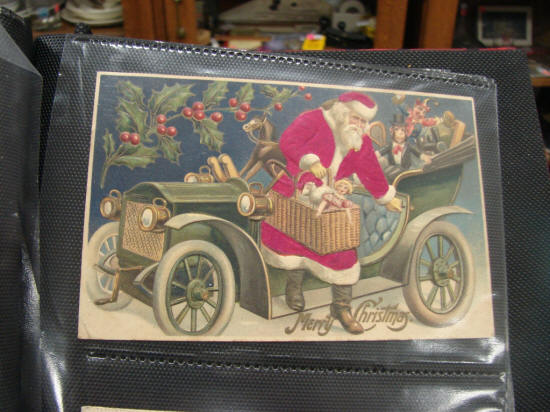
Holiday cards were very popular 100
years ago. According to Cheryl
Baker, they are highly sought after
by collectors.
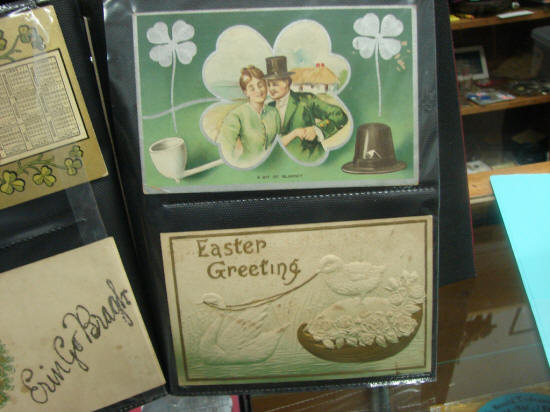
The early postcards
were much different than the ones we
are used to today. The cards from
the 19th century did not have space
for a message. The sender could only
print the address of the recipient
on the back of the card. This was
common until 1907. Cards were used
to send holiday greetings with an
image depicting the holiday on the
card. These were precursors of the
fancy cards of today that are sent
in envelopes. “Many of the early
holiday cards are hard to find today
and are very collectible, especially
Halloween and St. Patrick’s Day,”
said Cheryl Baker.
[to
top of second column]
|

Early cards were not
just made of paper. There were
aluminum cards, and cards made of
wood. Leather was used to make
postcards. During World War I, there
was a cottage industry in Europe
making silk cards. They were very
popular with US troops as a way to
stay in touch with the relatives
back home.
Grocery stores sold postcards in
sets. Some of them had partial
lyrics of songs on them. When a set
sold out, the next set had the
continuing lyrics on them. Card
makers sometimes went door to door
taking photos of families and
affixing them to the cards.
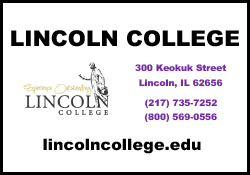
Cheryl Baker’s postcard collection
continues to grow. She is always on
the lookout for postcard shops and
collections that are for sale. City
of Lincoln postcards are high on her
search list. “I have found most of
my Lincoln city cards at a shop in
Ohio,” she said with a laugh. Cards
are very collectible. “I once found
a card I had been searching for. The
price was $500. I just could not pay
that,” she said. A bit of
negotiation brought the price within
her range.
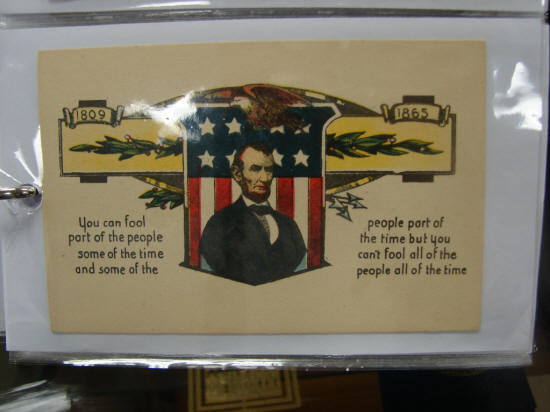
An early 20th century postcard with
Mr. Lincoln’s famous quote on it.
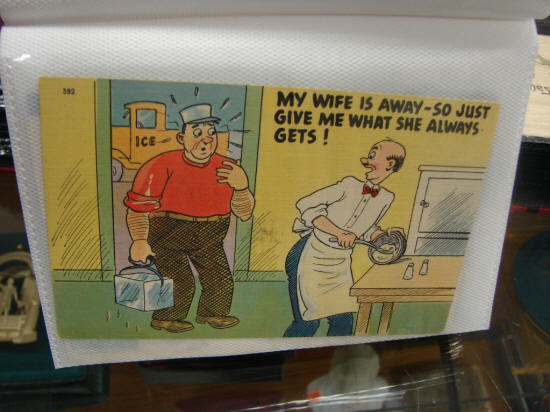
A humorous postcard that probably
could not be mailed today.
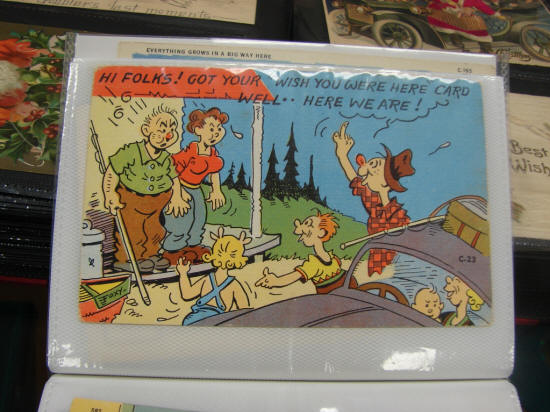
Another early 20th century humorous
card. Many were sold at grocery
stores.
Historical documents
can take many forms. Cheryl Baker
has found a colorful and fascinating
way to document both local and
national history with her postcard
collection.
The Logan County Genealogical and
Historical Society meets the third
Monday of the month as their
research center on Chicago Street in
Lincoln at 6:30 p.m. The public is
invited to attend and they always
have an interesting presentation.
[Curtis Fox]
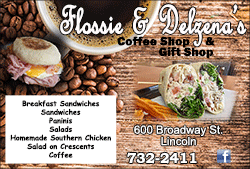
|